
Bertrand du Guesclin, nicknamed "The Eagle of Brittany" or "The Black Dog of Brocéliande", was a Breton knight and an important military commander on the French side during the Hundred Years' War. From 1370 to his death, he was Constable of France for King Charles V. Well known for his Fabian strategy, he took part in seven pitched battles and won the five in which he held command.
The Battle of Mauron was fought in 1352 in Brittany during the Breton War of Succession between an Anglo-Breton force supporting the claim of Jean de Montfort and a Franco-Breton force supporting the claim of Charles de Blois. The Anglo-Bretons were victorious. The battle took place in the context of the Hundred Years War.

Jean, or Jehan de Beaumanoir, marshal of Brittany for Charles of Blois, and captain of Josselin, is remembered for his share in the famous Combat of the Thirty during the War of Breton Succession (1341–1364) between the warring parties of competing claimants for the Dukedom.
William des Roches was a French knight and crusader who acted as Seneschal of Anjou, of Maine and of Touraine. After serving the Angevin kings of England, in 1202 he changed his loyalty to King Philip II of France and became a leading member of his government.

The Château de Ranton is a small fortified castle in the village of Ranton, in the Department of the Vienne just west of Loudun, and south of the Loire. It was one of the front line of fortresses which were built to defend the royal city of Loundun at the beginning of the Hundred Years' War in 1340–1345. It played this military role until 1372. It then became a feudal manor and one of the estates of aristocratic families associated with the Courts of the French Kings and the Dukes of Anjou.

The House of Harcourt is a Norman family, and named after its seigneurie of Harcourt in Normandy. Its mottos were "Gesta verbis praeveniant", "Gesta verbis praevenient", and "Le bon temps viendra ... de France".

The House of Bethune is a French noble house from the province of Artois in the north of France whose proven filiation dates back to Guillaume de Béthune who made his will in 1213. This family became extinct in 1807 with Maximilien-Alexandre de Béthune, Duke of Sully (1784-1807).
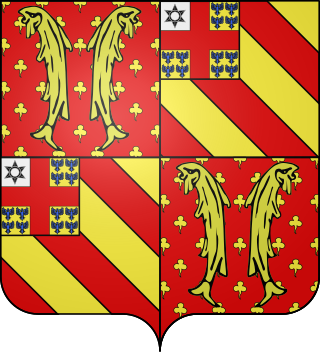
Guy I of Clermont-Nesle was a Marshal of France, Seigneur (Lord) of Offemont jure uxoris, and possibly of Ailly, Maulette and Breteuil. He might have been a Seigneur of Nesle also, or used the title "Sire of Nesle" due to his family. Difficulties about the seigneurie of Breteuil are present, and the status of Ailly and Maulette in relation to Breteuil.

Raoul II/III of Clermont-Nesle was Seigneur (Lord) of Nesle in Picardy (de), Viscount of Châteaudun (de), Grand Chamberlain of France and Constable of France.
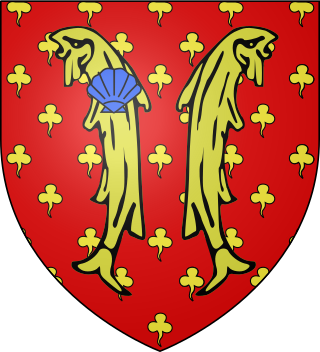
Guy II de Nesle, Lord of Mello, was a Marshal of France (1348) who was killed in the Battle of Mauron.
Amaury I of Craon (1170–1226), was Lord of Craon, of Chantocé, Ingrandes, Candé, Segré, Duretal, Baugé and of Lude.

Jeanne de Clisson (1300–1359), also known as Jeanne de Belleville and the Lioness of Brittany, was a French / Breton former noblewoman who became a privateer to avenge her husband after he was executed for treason by the French King Philip VI. She crossed the English Channel targeting French ships and often slaughtering their crew. It was her practice to leave at least one sailor alive to carry her message of vengeance.
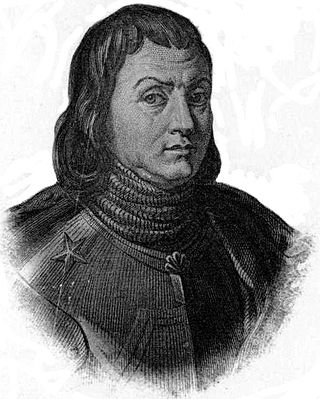
Jean II de Rieux Breton Lord of Rieux, Rochefort and Ancenis, initially in the service of Brittany, but also eventually a Marshal of France in the service of King Charles VI. He was the great-grandfather of Jean IV de Rieux.
The House of Clermont is a noble family of the French region of Picardy dating from the 10th century and included both the early counts of Clermont-en-Beauvaisis as well as many Constables of France. The house eventually merged with the House of Nesle with the marriage of Raoul II of Clermont and Gertrude of Nesle. The family is the sometimes referred to as the House of Clermont-Nesle.
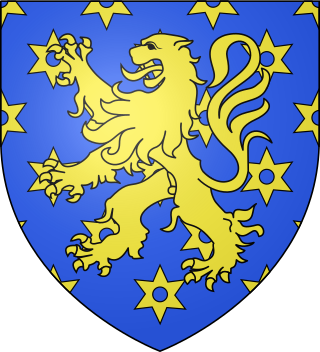
Henri IV de Sully, Grand Butler of France, Treasurer of France, Lord of Sully was a 13th-14th century French noble.
Guillaume Bertrand was a French prelate of the 14th century.

Sir Walter Bentley was an English knight who fought during the Hundred Year's War.

Geoffroy d'Harcourt, called "the Lame", Viscount of Saint-Sauveur, was a 14th century French nobleman and prominent soldier during the early stages of the Hundred Years' War.
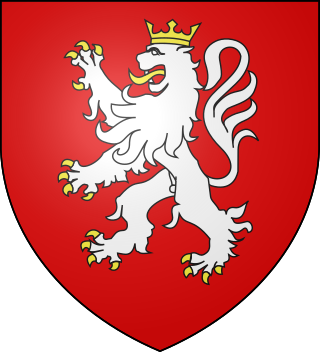
Olivier IV de Clisson (1300–1343), was a Breton Marche Lord and knight who became embroiled in the intrigue of Vannes and was subsequently executed by the King of France for perceived treason. He was the husband of Jeanne de Clisson who eventually became known as the Lioness of Brittany.

Henri de Silly, seigneur de La Roche-Guyon, damoiseau de Commercy, baron d'Aquigny was a French noble, military commander, and courtier during the French Wars of Religion. The eldest son of Louis de Silly, seigneur de La Roche-Guyon and Anne de Laval, he initially entered the service of the duc d'Anjou brother to the king. After the death of Charles IX, Anjou returned to France as Henri III. He served in the new king's household as either an écuyer or échanson before becoming a gentilhomme de la chambre. He was infuriated when Jeanne de Cossé, who had been due to marry him, was instead married to the king's favourite Saint-Luc and departed court. Affiliating himself with the king's brother the duc d'Alençon he raised troops in Normandie for indeterminate purpose. He further involved himself in plots to both kidnap and poison Henri III.















